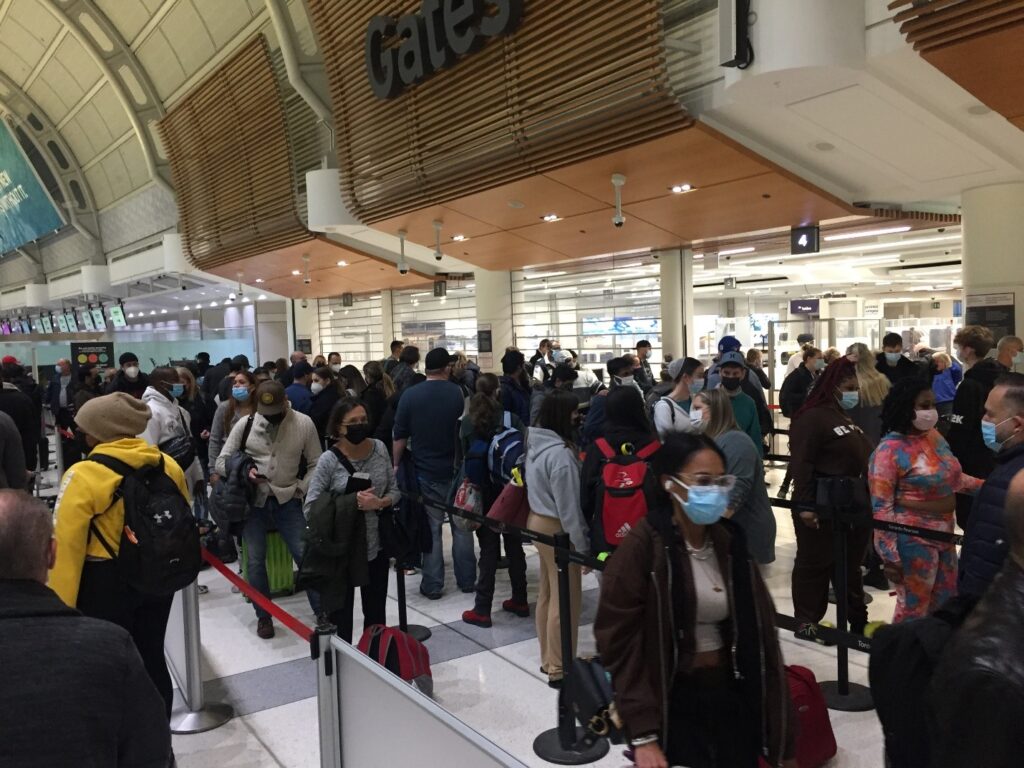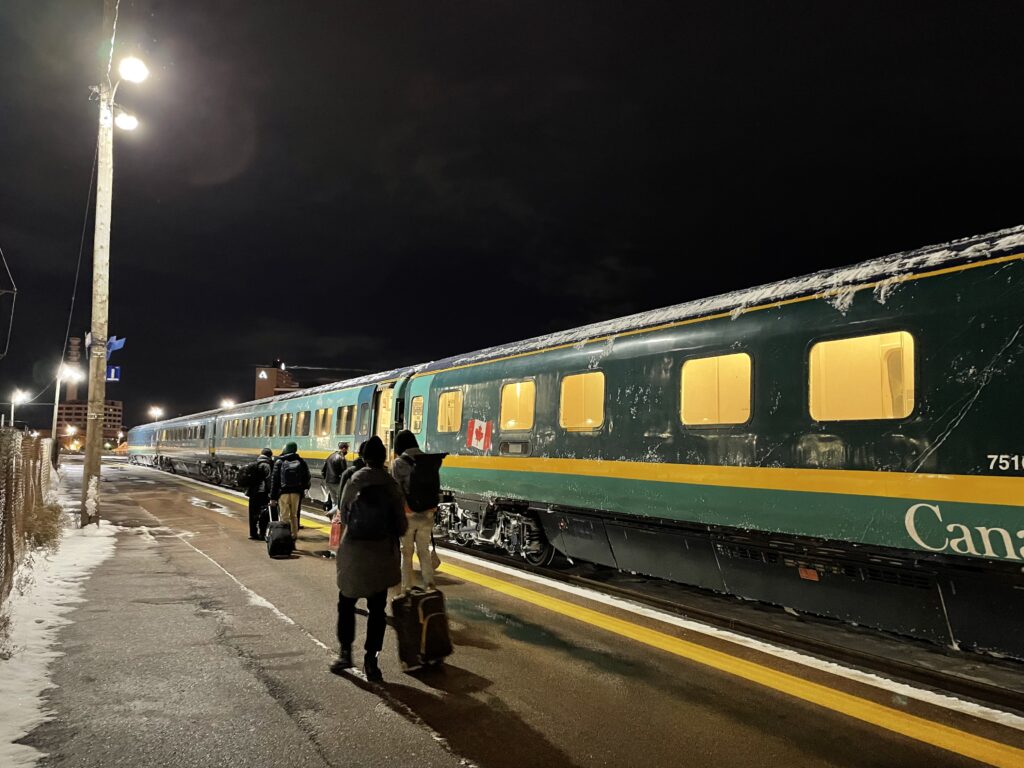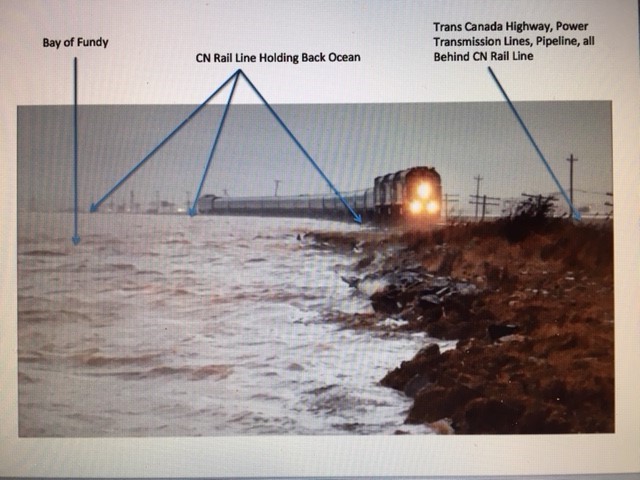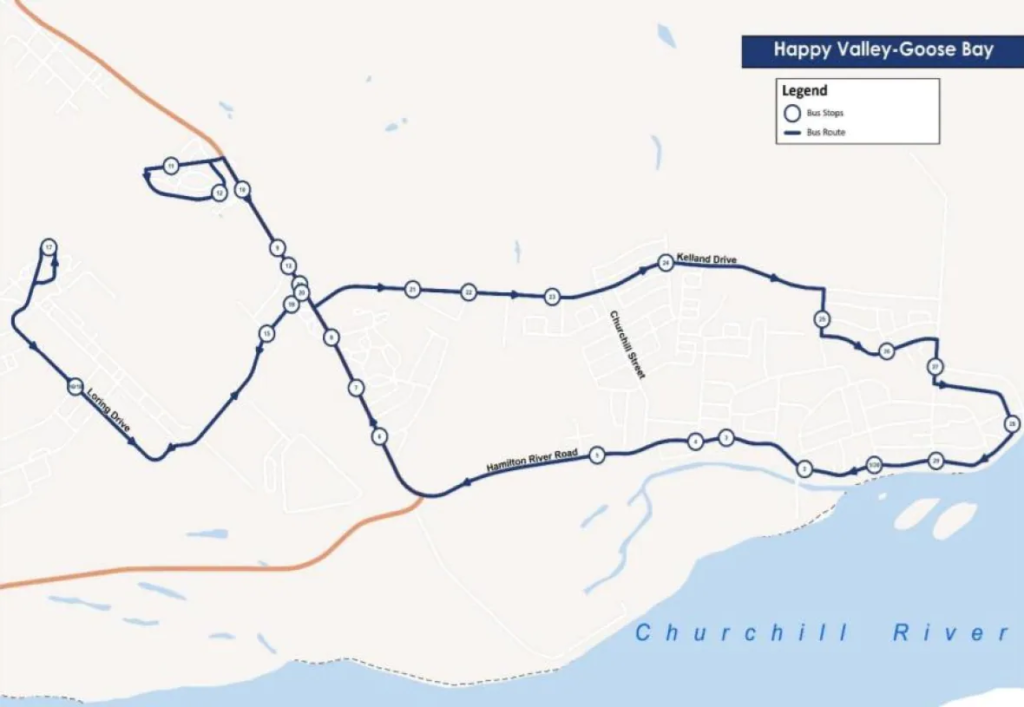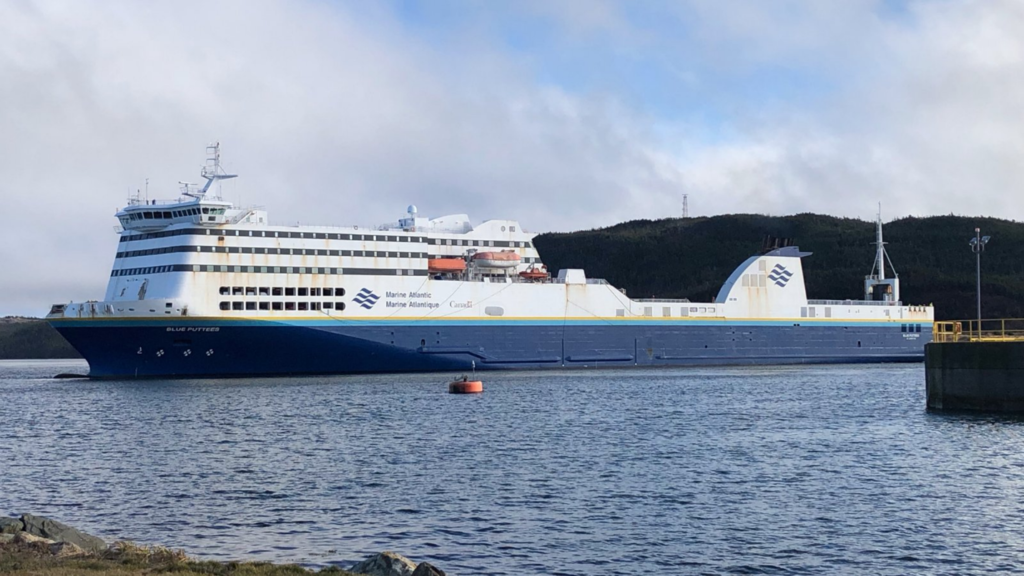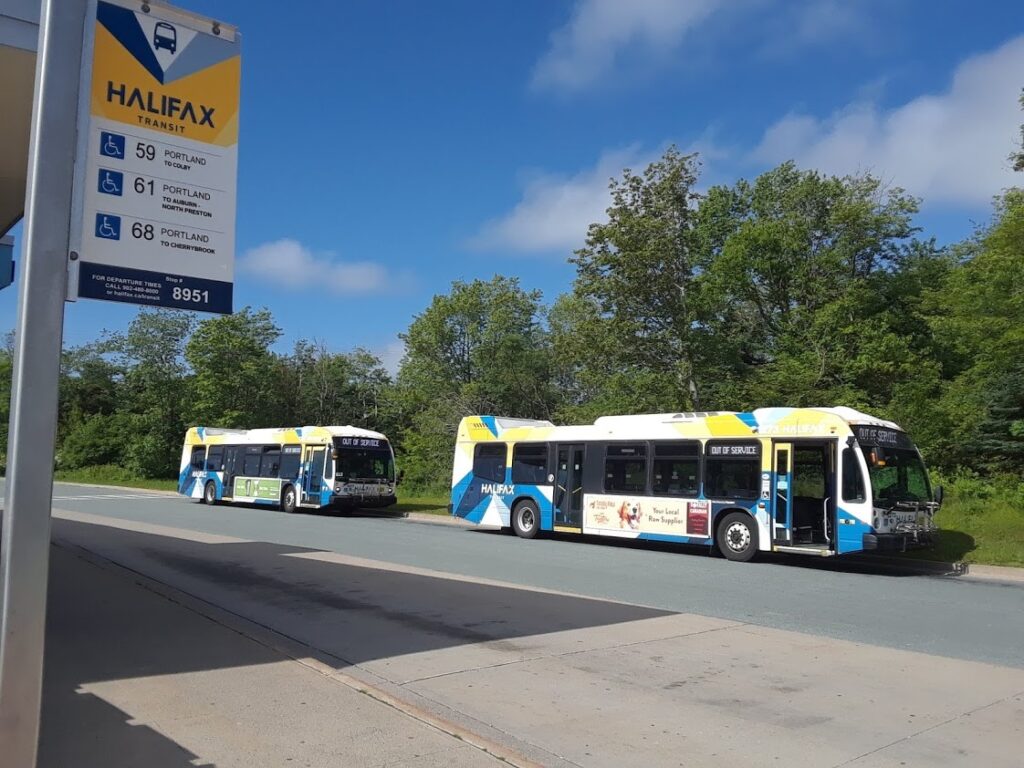Welcome to the April 2022 installment of Atlantic Transport News!
Here’s a look at what you’ll find in this edition:
- Federal budget comes up empty for VIA’s Ocean – but tri-weekly service to resume in June
- Little joy for transit in three provincial budgets
- Maritime Bus gets cash infusion from provinces – but nothing yet for DRL
- Urban transit: “Clawing its way back to normal”
- Rates unchanged this summer on Marine Atlantic ferries
- Overseas flights returning to Halifax Stanfield
- TAA’s Annual General Meeting set for May 28, 2022
FEDERAL BUDGET COMES UP EMPTY FOR VIA’S OCEAN – BUT TRI-WEEKLY SERVICE TO RESUME IN JUNE
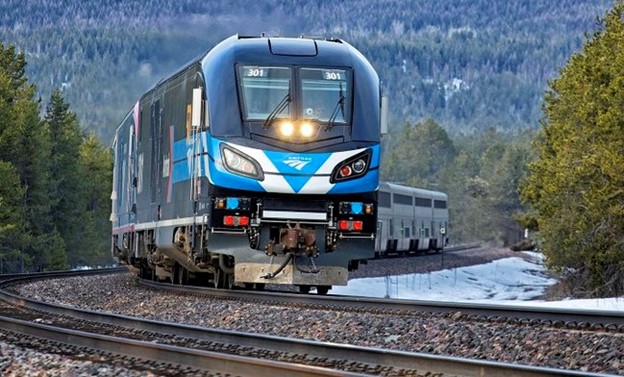
PHOTO – Justin Franz/Twitter
Atlantic Canadians are still no closer to seeing a modernized rail passenger service after the 2022-23 federal budget was unveiled on April 7. The Trudeau Government’s fiscal plan made no mention of any investment outside the Toronto-Quebec City corridor, despite the first tentative steps taken by VIA Rail in January towards a long-overdue equipment replacement program. VIA is revealing little about the initiative, but the Crown corporation does acknowledge that there is no funding for it at this time. Evidently they are testing the waters to learn what options might be available, but are not prepared to say even how many participants were involved at their virtual “market day” – much less identify any of them. Neither will they disclose what type of equipment they might be looking at.
Meanwhile, VIA has just confirmed that the third frequency of the Ocean will resume in the first week of June. Online bookings had been available for Friday departures from Montreal and Halifax effective June 3 for several months, but the company hadn’t been able to confirm that these would actually take place, citing COVID-19 uncertainty. But the April 14th media release means that the full tri-weekly pre-pandemic schedule will be restored for the summer, albeit missing some of the amenities previously offered to sleeper-class passengers.
VIA CEO Cynthia Garneau termed it “a celebratory and crucial milestone in our service resumption plan after an incredibly challenging two years. We look forward to welcoming more of our customers back on board our trains and doing our part to encourage Canadians and tourists to get out and explore this beautiful country for the summer travel season.”
The release said VIA’s objective has always been the safe resumption of services when conditions allowed it, adding that the decision to add frequencies during the pandemic has been based on various factors, including demand, employing a balanced approach in order to fulfill VIA Rail’s public service mandate and manage financial impacts. The company will revise its service offering in line with the latest developments if necessary, and existing safety measures in response to COVID-19 remain in effect. Those include a masking policy on trains and in stations, as well as mandatory vaccination as required by the federal government.
“The train remains one of the safest ways to travel this summer and we are pleased to be offering our passengers more frequencies and more flexibility,” the announcement concluded. No details are yet available on whether additional sleeping car capacity will be available. The Ocean has been operating with just four Renaissance sleepers for the past several months, and for a number of upcoming departures the reservation system is showing all space as sold out.
LITTLE JOY FOR TRANSIT IN THREE PROVINCIAL BUDGETS

(Image from Facebook)
Sustainable transportation is clearly not a priority for the provincial governments of Nova Scotia, New Brunswick, and Newfoundland and Labrador. All three tabled their 2022 budgets in recent weeks – and all three gave public transit short shrift. Where it did get a mention, only lip service was paid.
In St. John’s there’s a bit of a tempest brewing because the Furey Liberals tried to claim political points for the underfunded Metrobus pass aimed at low-income residents. The City is being expected to provide the free transportation to more people, but with a lower level of provincial funding than previously – despite much higher fuel costs. At the same time, the Province is refusing to give Metrobus a break on its taxes or the registration fees for its vehicles. City Councillor Maggie Burton perhaps said it best when she tweeted “there can be no meaningful action on poverty and climate without investment in public transportation.”
New Brunswick is apparently still adamant that it will not commit matching provincial funding in order to avail of available federal money for public transit, despite requests to reconsider from at least two city councils. Quoting Ottawa sources, Brunswick News reported that there is $112 million left on the table for transit investments in NB if the Province is prepared to come up with its share, but Premier Higgs continues to argue that the program isn’t flexible enough.
Instead, the Province unveiled a three-year $1.1-billion plan for improving and extending the life of existing roads and bridges – some of which admittedly are in dire need of attention. But this, of course, does nothing to reduce automobile dependency or promote sustainable transportation. Moncton economist David Campbell recently posted a graph indicating that New Brunswickers spend a higher proportion of their household income on motor fuel than any other Canadians.

In late breaking news from Ottawa, there has apparently been some sort of compromise hammered out that would allow New Brunswick greater flexibility in accessing the federal funds, which are scheduled to disappear if not used by the end of the new fiscal year. Brunswick News says influential federal minister Dominic LeBlanc brokered the arrangement, and Premier Higgs was quoted as being pleased with the outcome. Although details aren’t yet available it appears most of the money earmarked for transit may be diverted to projects preferred by the province.
Meanwhile, Nova Scotia’s capital plan for 2022-23 includes $507.8 million for roads, highways and bridges. The only discernable nod to green transportation in the budget is a $2-million allocation for electric vehicle charging stations across the province. It isn’t clear if NS is prepared to match Ottawa’s offer for transit funding.
Prince Edward Island remains the front-runner in sustainable public transportation policies. It’s now been confirmed that the Island Transit network will be extended to the western end of the province effective Tuesday, April 19, which means residents will be able to effectively travel from one end of the province to the other for just a $2 fare, which includes a transfer to the T3 Transit service in Charlottetown. The recent budget also provided for free transit for all Islanders under 18, as well as $100 point-of-sale rebates on bicycle purchases and $500 for e-bikes. To allay concerns about supply chain issues, the government has announced that the cycle rebate will be extended indefinitely.
MARITIME BUS GETS CASH INFUSION FROM PROVINCES – BUT NOTHING YET FOR DRL
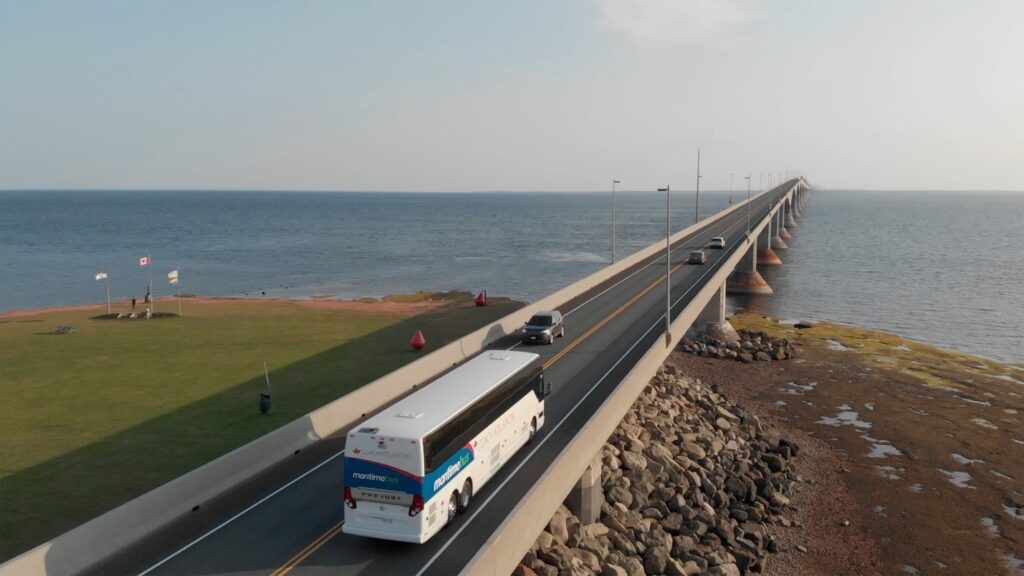
Struggling motorcoach carrier Maritime Bus got some good news from three provincial governments on April 12. In a joint news release, Nova Scotia, New Brunswick and Prince Edward Island announced a combined contribution of just under $900,000 to help the company defray some of the multi-million-dollar losses it has sustained during the pandemic. In addition to drastically reduced farebox revenue on its intercity and rural routes, the coach tour and cruise ship business disappeared, eliminating many of the economies of scale that kept the family-owned enterprise viable.
“It’s nice to feel needed and it’s nice to feel wanted,” said Maritime Bus founder Mike Cassidy in an interview with CBC News. It’s the second infusion of funds Mr. Cassidy’s company has received from the provinces, and is particularly important in enabling service to continue in rural areas like northern New Brunswick. He’s looking forward to the return of cruise ships, and hopeful that revenues during the upcoming tourist season will reach 90% of 2019 levels.
Nova Scotia and New Brunswick will each contribute $400,000 to the company, while Prince Edward Island is providing $90,000. The media release from Nova Scotia said the contributions are proportional to the ratio of kilometres driven by the service in each province.
DRL Coachlines, also a privately-owned carrier that provides daily service across 900 kilometres of the Trans Canada Highway in Newfoundland, has also been trying to get some financial support from government to help offset its pandemic losses. Owner Jason Roberts says nothing has been forthcoming to date, despite assurances last fall that help was on the way. The province has cut registration fees in half for 2022 to help compensate car owners for higher fuel prices, but hasn’t offered anything to public transportation operators.
Meanwhile, there’s been no word from Ottawa about any change in federal policy regarding the
Rural Transit Solutions Fund. The $250-million program was unveiled last year, but the federal government has been adamant that only not-for-profit agencies qualify for the capital assistance it offers. That specifically excludes companies like Maritime Bus and DRL – despite the fact that both have been losing massive sums of money over the past two years.
Mike Cassidy had the opportunity for a face-to-face meeting with federal Transport Minister Omar Alghabra in early March, and expressed hope afterwards that the political will for change was beginning to come round. But he’s still waiting for talk to turn to positive action.
URBAN TRANSIT: “CLAWING ITS WAY BACK TO NORMAL”
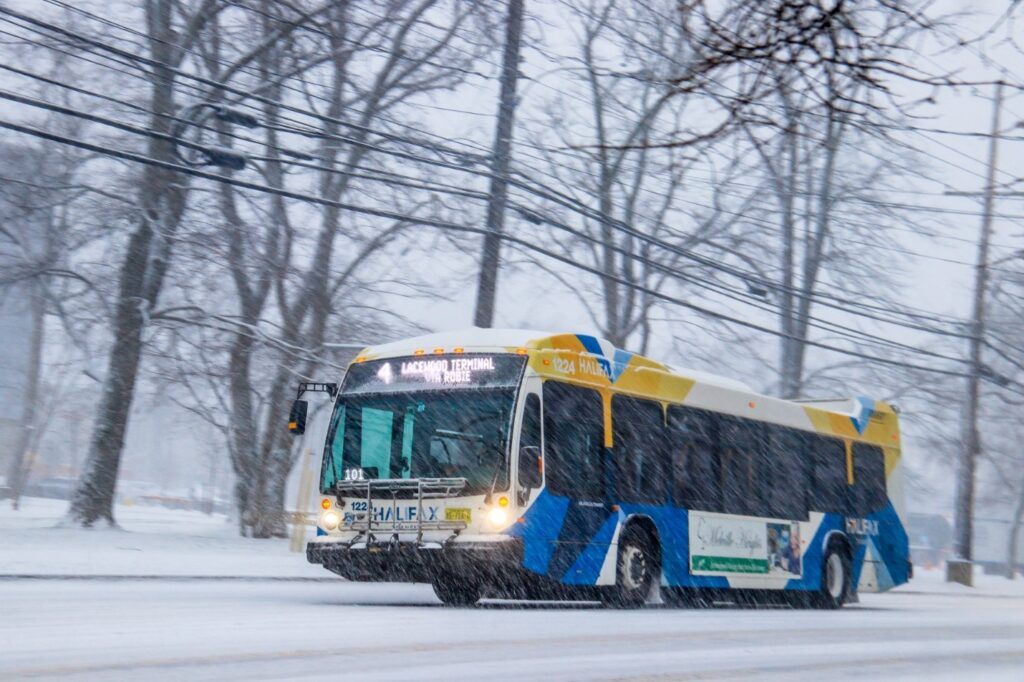
As more and more people transition towards a new normal after nearly two years of working from home, and the masking guidelines on public transit switch from “mandatory” to “recommended”, the bus systems in the region’s major urban centres are adjusting routes and schedules as they ride the challenging road to recovery.
Halifax Transit introduced some large-scale service changes back in November, primarily affecting communities on the Dartmouth side, but also reaching to Halifax, Spryfield and Porters Lake/Seaforth. Most of these changes had been in the works long before the pandemic hit, and were included in plans approved by the Regional Municipal Council last spring. They are not part of the longer-term rapid transit plan unveiled in 2021, but they have the same objective – to make it easier for Haligonians to get to their destinations more quickly and conveniently, and without resorting to cars. Although the agency announced a return to its full pandemic schedule several months ago, staffing issues have forced periodic cancellation of both bus runs and ferry crossings.

Meanwhile, significant improvements to public transit in St. John’s were launched in January, after City Council allocated funding for the so-called “Zip Network”, aimed at increased frequency on multiple Metrobus routes. The upgrades are part of a commitment originally approved in 2019, but implementation was put on hold due to pandemic restrictions.
The Zip Network offers increased and consistent frequency throughout the day on routes 1, 2, 3 and 10, beginning earlier in the morning and extending later in the day, with 15-minute frequency at peak hours on weekdays and 30 minutes for most other times. Metrobus general manager Judy Powell says user feedback from the changes has been positive, but the COVID factor makes the total impact difficult to measure. For example, Zip was introduced at the same time that most university students returned to campus. She added that ridership continues to gradually improve, and by March had reached 88% of pre-pandemic levels.
Greater Moncton’s Codiac Transpo is also tweaking its routes and schedules as it “claws its way back to normal”, says operations manager Alex Grncarovski. The system is now at 90% of pre-pandemic service hours, and is showing a steady ridership increase. With a new automated fare collection system now fully implemented, there’s a wealth of new data available for planning purposes that simply wasn’t there before. And, they’re hearing a lot from employers who are recognizing how important availability of transit is in recruitment. All this means more “thinking outside the box” to get the best bang for the buck as routing and expansion changes are contemplated.
Codiac Transpo is especially pleased that the Town of Riverview is showing a stronger commitment to public transit. Council has maintained funding for expanded service that was first introduced last year to help residents cope with the extended closure of one of the Petitcodiac River crossings. Riverview has a history of being very car-centric, and presents a special challenge, Mr. Grncarovski says, because it is very spread out and much more difficult to adequately serve than Moncton and Dieppe. But the coverage area has recently been extended, and residents appear to be reacting positively to more reliable and quicker service.
RATES UNCHANGED THIS SUMMER ON MARINE ATLANTIC FERRIES
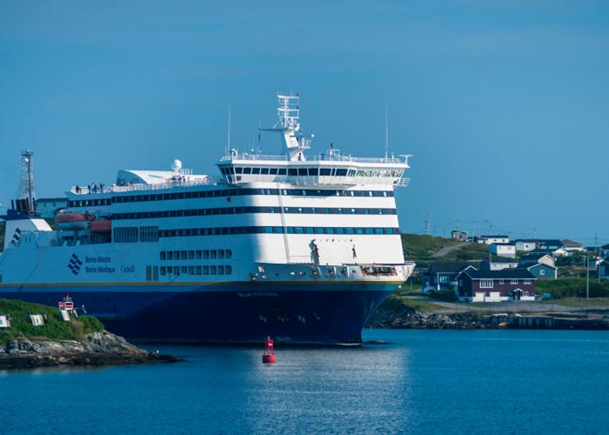
Marine Atlantic has confirmed that there will be no rate increase on its ferries to Newfoundland this summer. Evidently the federal government did not want to either rain on the province’s Come Home 2022 parade or exacerbate the rising cost of living by increasing the charges for trucking goods to the island. In effect, this means that fares will remain at the same level as in 2020, with the 65% cost recovery requirement evidently held in abeyance for another year. And, because the Crown corporation has a fuel hedging program with their own tank farm, there’s unlikely to be any immediate impact on the fuel surcharge as a result of world events. Ferry bookings for the summer are running well ahead of pre-pandemic norms for this time of year – no doubt a consequence of pent-up demand among ex-pat Newfoundlanders.
Meanwhile, there’s optimism that onboard amenities will return to near-normal this summer, after two seasons of very limited food and beverage offerings. Colin Tibbo, the executive in charge of customer experience, says public health considerations may dictate some adjustments in how the food actually gets to the plate, but he’s looking forward to offering the same standard of service that received high satisfaction levels from passengers pre-pandemic.
OVERSEAS FLIGHTS RETURNING TO HALIFAX STANFIELD
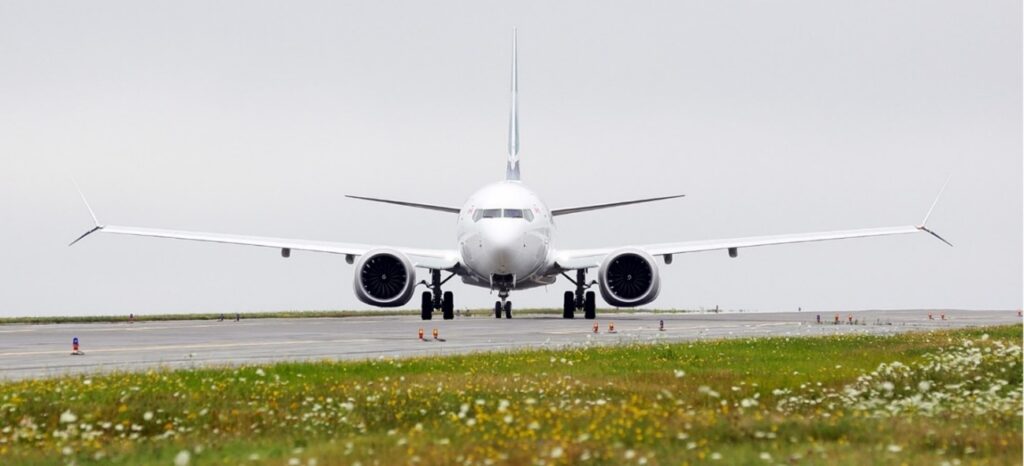
“Travel is getting easier again,” proclaims a recent e-mail blast from WestJet to its customers. And, the Calgary-based airline appears to be as good as its word for overseas travel this summer from Halifax Stanfield International Airport. It’s forging ahead with the restoration of seasonal direct service to four destinations across the pond, beginning on May 1. This summer there will be a daily flight from YHZ to London Gatwick, and tri-weekly service to Glasgow and Dublin, plus four times a week to Paris.
Air Canada is also resuming its non-stop, year-round service to London Heathrow, beginning with a five-times weekly operation effective April 30, increasing to daily for the peak travel period. And starting June 24 the national flag carrier will resume daily Halifax- Boston service. American Airlines, meanwhile, will start daily service to Philadelphia on June 3, and also offer once-a-week direct flights to Boston and Washington. And, two carriers will offer seasonal service to Frankfurt beginning this spring. Condor Airlines and Lufthansa subsidiary Eurowings Discover will both fly to and from YHZ three times a week.
“We are very pleased that many of the non-stop overseas and U.S. flights that were offered at Halifax Stanfield pre-pandemic will return for summer 2022,” says airport spokesperson Tiffany Chase, although she acknowledged that some routes will be offered at lesser frequencies until more travel demand returns. “We will continue working with our airline partners to bring back more routes and increase flight frequencies in the coming months and years for the benefit of our communities.”
Even though it’s some 470 nautical miles closer to Europe than Halifax Stanfield, the picture at St. John’s International Airport is not quite so rosy. Apart from flights to and from the French territory of St. Pierre and Miquelon, YYT will remain devoid of direct service on any international route. Three years ago WestJet decided to permanently centralize all its Atlantic Canada overseas flights at Halifax. Air Canada cancelled its on-again, off-again service to London Heathrow in 2019, when the controversial Boeing MAX 8 airplanes were grounded worldwide over safety concerns. And then came the pandemic.
Air Canada told CBC News by an e-mailed statement in mid-March that there were currently no plans to add any international flying out of St. Johns, blaming the continued suspension on pandemic effects.
Interestingly, all the overseas flights resuming from Halifax by both Air Canada and WestJet will use the MAX 8 aircraft, with all safety issues apparently now resolved to the satisfaction of the regulatory authorities.
TAA’S ANNUAL GENERAL MEETING SET FOR MAY 28

Once again, this year’s Transport Action Atlantic’s annual general meeting will be held virtually using the ZOOM platform on Saturday, 28 May 2021, beginning at 1400 ADT (1430 NDT).
The agenda includes annual reports and financial statements, appointment of an auditor, election of a board of directors, and any other business that may arise.
Current members of Transport Action Atlantic may nominate (with their consent) any other member in good standing for a position on the board. It is the board’s responsibility to choose the executive officers. Nominations should be made in advance of the meeting, and may be submitted by mail to the TAA Nominating Committee, P.O.Box 268, Dartmouth NS B2Y 3Y3, or (preferably) by e-mail to TAA secretary Michael Perry at mikeper5@nb.sympatico.ca.
Besides the required business, we plan to include guest speakers focusing on critical public transportation issues in our region, with ample opportunity for questions and discussion. Please watch for further details on our website as this program is finalized. TAA members for whom we have an e-mail address will automatically receive an invitation to the meeting. Others who’d like to participate should request credentials by e-mail to atlantic@transportaction.ca. As always, our AGM is open to the general public and the media.





